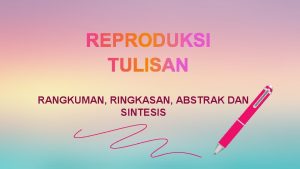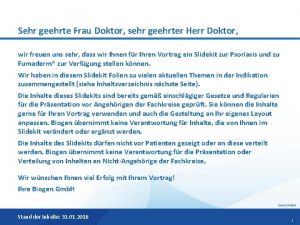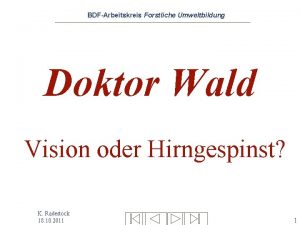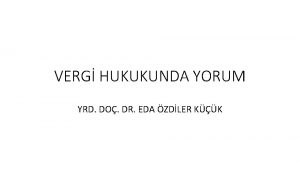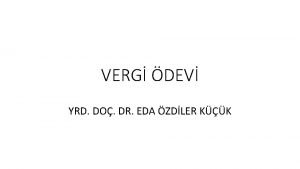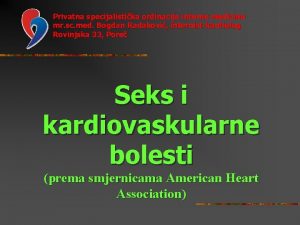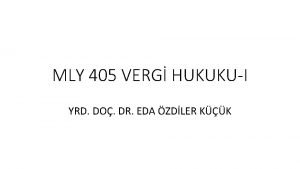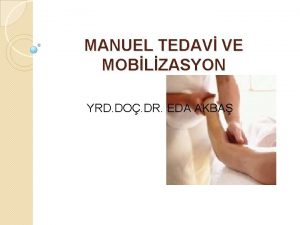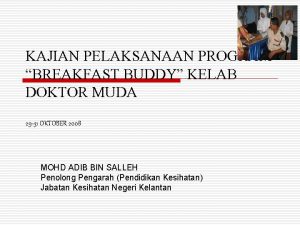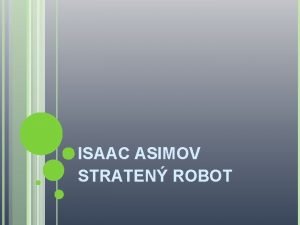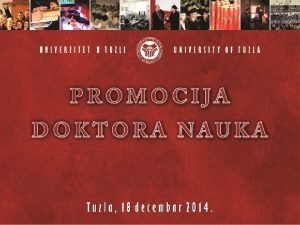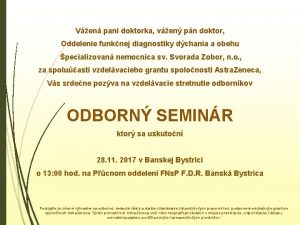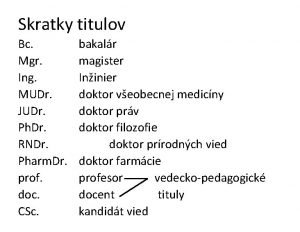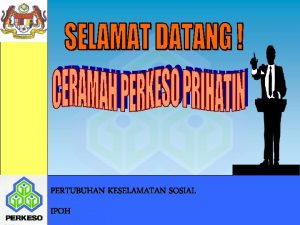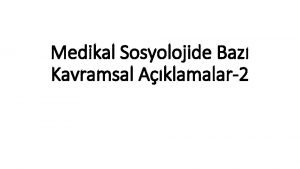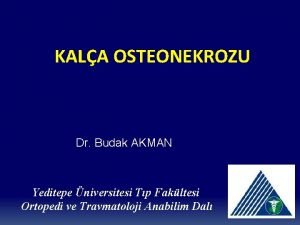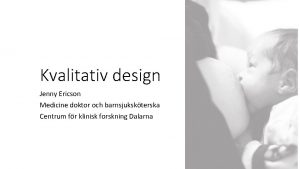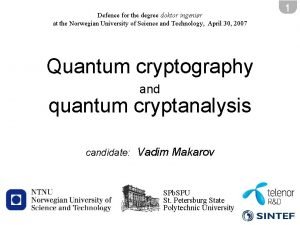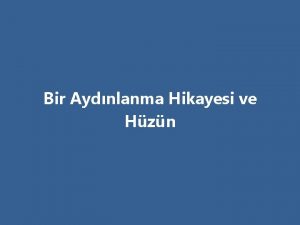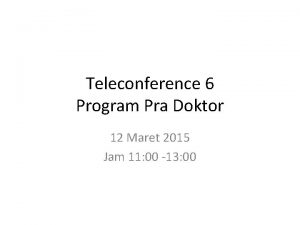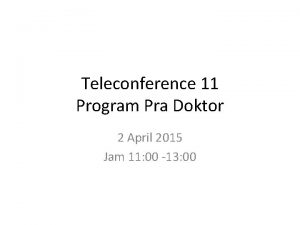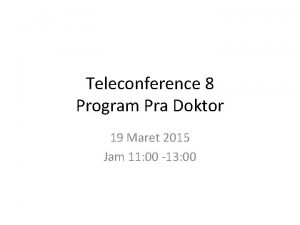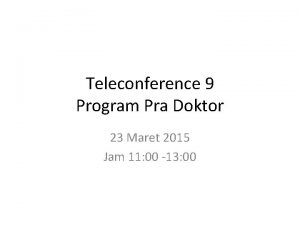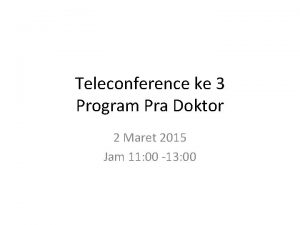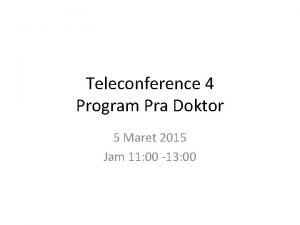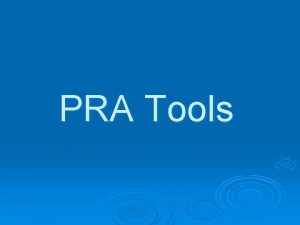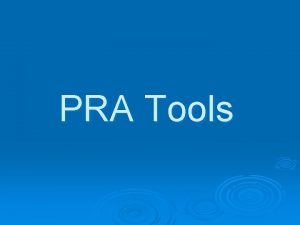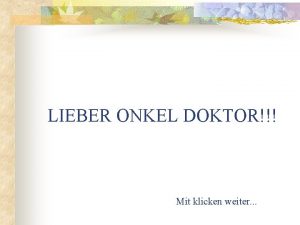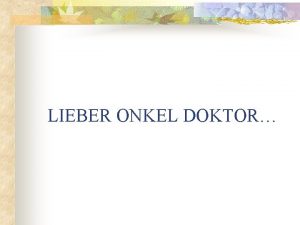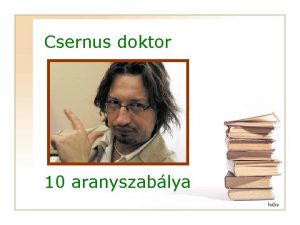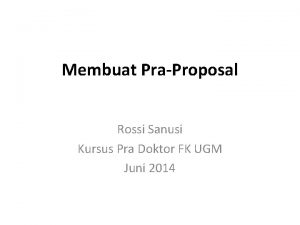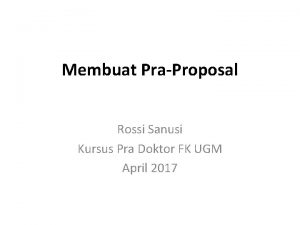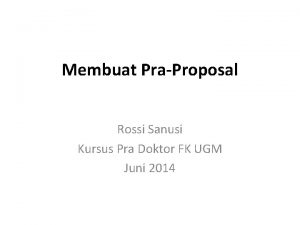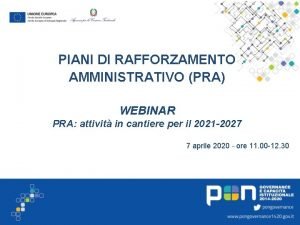Teleconference 12 Program Pra Doktor Rsum Summary Rangkuman



























- Slides: 27

Teleconference 12 Program Pra Doktor Résumé, Summary, Rangkuman 6 April 2015 Jam 11: 00 -13: 00

• Proses penelitian dimulai dengan suatu topik. • Topik dapat mengenai suatu intervensi (e. g. , Statin), suatu hasil intervensi (e. g. , Pencegahan sekunder penyakit kardiovaskuler), atau keduanya (e. g. , Farmakoterapi utk pencegahan sekunder penyakit kardiovaskuler). • Berdasarkan topik ini peneliti mengidentifikasi kata-kata kunci dalam Bahasa Inggeris. Contoh: Pharmacotherapy, Cardiovascular Disease, Secondary Prevention.

• Dengan kata 2 kunci peneliti mencari makalah Systematic Review (SR) di mesin 2 pencari. • Cari makalah SR yg seterkini mungkin. Jika makalah SR yg diinginkan belum ditemukan coba terus mencari dengan menggunakan sinonim, thesaurus (Shift F 7), pengejaan yg lain, akhiran/awalan, kata 2 kunci yg terdapat di bawah abstract makalah 2 Penelitian Empirik (PE), judul makalah 2 di daftar rujukan.

Hirarki Bukti Sumber: http: //www. mededirect. org/faculty. cfm

• Makalah SR memuat hasil critical appraisal (CA) makalah 2 PE yg dilacak dan disaring secara sistematis. • Biasanya yg di. CA adalah makalah 2 PE yg menggunakan rancangan experimen murni (RCT), karena validitas dalam dan luar yg tinggi tentang efikasi intervensi.

Penafsiran Data Pop Sasaran Pop yg Disampel Inferensi statistik Validitas Dalam Sampel Validitas Luar

• Untuk menghasilkan kesimpulan yg valid ttg efikasi intervensi, PE juga harus didasarkan atas kerangka konsep yg valid, menggunakan metoda pengumpulan dan pengolahan data yg valid dan dilaksanakan dgn seksama sesuai rencana.

• Kemungkinan kesimpulan makalah SR: a) Tidak ada makalah PE dgn kesimpulan yg valid PE lebih lanjut dengan rancangan yg lebih baik. b) Ada makalah PE dgn kesimpulan yg valid dan efikasi intervensi bermakna secara praktis/klinis (effect size besar) EBP. c) Jika effect size besar, tetapi tidak bermakna secara statistik replikasi dgn sample size yg lebih besar atau meta-analysis. d) Ada makalah PE dgn kesimpulan yg valid tetapi efikasi intervensi tidak bermakna secara praktis/klinis perbaiki kerangka konsep.

• Makalah SR seterkini mungkin supaya tidak perlu melacak terlalu jauh ke belakang makalah 2 PE yg terbit kemudian. • Makalah 2 PE yg terbit kemudian mungkin ada yg berhasil memecahkan seluruh/sebagian masalah penelitian Masalah Penelitian & Tujuan Penelitian diperbaharui. • Perhatikan metoda SR yg digunakan (utk ditiru saat menulis Bab II) dan nilai mutunya, atau cari makalah SR yg telah direview organisasi yg dapat diandalkan (e. g. , The Cochrane Library, Health. Evidence).

Bab II. Telaah Pustaka • Penelitian 2 Empirik terkini (sebut metoda telaah pustaka – narrative, scoping, + CA, SR) • Konstruk Intervensi/Prediktor • Konstruk Hasil Intervensi/Kriterion • Landasan Teori, Konstruk Mediator & Konstruk Moderator • Kerangka Konsep • Hipotesis 2 Penelitian.

• Contoh hasil pelacakan makalah SR di Google Scholar (sejak 2015) dgn kata 2 kunci: Statin* Systematic Review Gudzune, K. A. , Monroe, A. K. , Sharma, R. , Ranasinghe, P. D. , Chelladurai, Y. , & Robinson, K. A. (2014). Effectiveness of combination therapy with statin and another lipidmodifying agent compared with intensified statin monotherapy: a systematic review. Annals of internal medicine, 160(7), 468 -476. *) Mengatasi hyperlipidemia merupakan pencegahan sekunder penyakit CV.

• Purpose: To compare the clinical benefits, adherence, and harms of lower-intensity statin combination therapy with those of higher-intensity statin monotherapy among adults at high risk for atherosclerotic cardiovascular disease (ASCVD). • Data Sources: MEDLINE, EMBASE, and the Cochrane Central Register of Controlled Trials from inception to July 2013, with an updated MEDLINE search through November 2013. • Study Selection: Randomized, controlled trials published in English. • Data Extraction: Two reviewers extracted information on study design, population characteristics, interventions, and outcomes (deaths, ASCVD events, low-density lipoprotein [LDL] cholesterol level, adherence, and adverse events). Two independent reviewers assessed risk of bias.

From: Effectiveness of Combination Therapy With Statin and Another Lipid-Modifying Agent Compared With Intensified Statin Monotherapy: A Systematic Review. Effectiveness of Combination Therapy With Statin Ann Intern Med. 2014; 160(7): 468 -476. doi: 10. 7326/M 13 -2526 Figure Legend: Summary of evidence search and selection. ASCVD = atherosclerotic cardiovascular disease; CENTRAL = Cochrane Central Register of Controlled Trials; FDA = U. S. Food and Drug Administration; RCT = randomized, controlled trial; SIP = scientific information packet. * Citations could be excluded for >1 reason; therefore, the sum of excluded studies listed from each category may exceed the actual number of citations excluded. Date of download: 4/5/2015 Copyright © American College of Physicians. All rights reserved.

• Data Synthesis: A total of 36 trials were included. Low-intensity statin plus bile acid sequestrant decreased LDL cholesterol level 0% to 14% more than mid-intensity monotherapy among high-risk hyperlipidemic patients. Mid-intensity statin plus ezetimibe decreased LDL cholesterol level 5% to 15% and 3% to 21% more than high-intensity monotherapy among patients with ASCVD and diabetes mellitus, respectively. Evidence was insufficient to evaluate LDL cholesterol for fibrates, niacin, and ω-3 fatty acids. Evidence was insufficient for long-term clinical outcomes, adherence, and harms for all regimens.

• Limitation: Many trials had short durations and high attrition rates, lacked blinding, and did not assess long-term clinical benefits or harms. • Conclusion: Clinicians could consider using lower-intensity statin combined with bile acid sequestrant or ezetimibe among high-risk patients intolerant of or unresponsive to statins; however, this strategy should be used with caution given the lack of evidence on long-term clinical benefits and harms.

Bang, C. N. , & Okin, P. M. (2014). Statin treatment, new-onset diabetes, and other adverse effects: a systematic review. Current cardiology reports, 16(3), 1 -5. • Effek samping Statin: DM, myopathy, rhabdomyolysis, transaminase meningkat, cataract, mood disorders, dementia, peripheral neuropathy, hemorhagic stroke.

• Finegold, J. A. , Manisty, C. H. , Goldacre, B. , Barron, A. J. , & Francis, D. P. (2014). What proportion of symptomatic side effects in patients taking statins are genuinely caused by the drug? Systematic review of randomized placebo-controlled trials to aid individual patient choice. European journal of preventive cardiology, 21(4), 464 -474.

Results Among 14 primary prevention trials (46, 262 participants), statin therapy increased diabetes by absolute risk of 0. 5% (95% CI 0. 1– 1%, p = 0. 012), meanwhile reducing death by a similar extent: − 0. 5% (− 0. 9 to − 0. 2%, p = 0. 003). In the 15 secondary prevention RCTs (37, 618 participants), statins decreased death by 1. 4% (− 2. 1 to − 0. 7%, p < 0. 001). There were no other statinattributable symptoms, although asymptomatic liver transaminase elevation was 0. 4% more frequent with statins across all trials. Serious adverse events and withdrawals were similar in both arms.

Manafsirkan ES • Cohen’s “Rules-of-Thumb” – standardized mean difference effect size • small = 0. 20 • medium = 0. 50 • large = 0. 80 – correlation coefficient • small = 0. 10 • medium = 0. 25 • large = 0. 40 – odds-ratio • small = 1. 50 • medium = 2. 50 • large = 4. 30 Sumber: http: //mason. gmu. edu/~dwilsonb/downloads/interpretation. ppt Practical Meta-Analysis -- D. B. Wilson 19

Brault, M. , Ray, J. , Gomez, Y. H. , Mantzoros, C. S. , & Daskalopoulou, S. S. (2014). Statin treatment and newonset diabetes: a review of proposed mechanisms. Metabolism, 63(6), 735 -745. Mediator 2 yg dapat diuji: • Certain statins affect insulin secretion through direct, indirect or combined effects on calcium channels in pancreatic β-cells. • Reduced translocation of glucose transporter 4 in response to treatment results in hyperglycemia and hyperinsulinemia. • Statin therapy decreases other important downstream products, such as coenzyme Q 10, farnesyl pyrophosphate, geranyl pyrophosphate, and dolichol; their depletion leads to reduced intracellular signaling.

Proposal = Disertasi – (Hasil, Kesimpulan & Saran) Halaman-Halaman Muka (Halaman judul & Pengesahan, Daftar Isi, Daftar Tabel & Daftar Gambar, Intisari) Bagian Utama: • Pendahuluan • Telaah Pustaka • Metoda Penelitian • Rencana Pelaksanaan Hasil, Kesimpulan & Saran • Daftar Rujukan Lampiran-Lampiran

Pendahuluan • Latar Belakang: Masalah Praktis, Rekam Jejak Masalah Penelitian. • Tujuan Penelitian. • Manfaat Penelitian, • Keaslian Penelitian.

Telaah Pustaka Review Makalah 2 PE terkini. Konstruk Intervensi (Prediktor). Konstruk Hasil Intervensi (Kriterion). Kerangka Konsep, Konstruk Mediator, dan Konstruk Moderator • Hipotesis Penelitian • •

Action (Predictive) Theory Mediator Hasil (Kriterion) Intervensi (Prediktor) F 1 F 2 Moderator F 3 V 1 Explanatory Theory V 2 F = Faktor = Dimensi V = variabel atau item Confounding = moderator non-spesifik 24

Metoda Penelitian A. Rancangan Penelitian: 1. Rancangan pengumpulan data. 2. Rancangan pengolahan data. 3. Rancangan penafsiran data. B. Metoda Pengumpulan Data. Operasiona. C. Metoda Pengolahan Data. lisasi dari A D. Metoda Penafsiran Data.

Rencana Pelaksanaan Penelitian • Gannt Chart (Waktu, Kegiatan) • Anggaran.

 Which of the following is the purpose of a rsum?
Which of the following is the purpose of a rsum? What is a cv
What is a cv Jelaskan perbedaan ringkasan, abstrak, dan sintesis
Jelaskan perbedaan ringkasan, abstrak, dan sintesis Sehr geehrter herr doktor
Sehr geehrter herr doktor Doktor wald gedicht
Doktor wald gedicht Vergi hukuku yorum yöntemleri
Vergi hukuku yorum yöntemleri Doedo doktor eda
Doedo doktor eda Ekstrasegmental ağrı
Ekstrasegmental ağrı Dr radaković poreč
Dr radaković poreč Podivný případ doktora jekylla a pana hyda rozbor
Podivný případ doktora jekylla a pana hyda rozbor Doedo doktor eda
Doedo doktor eda Doedo doktor eda
Doedo doktor eda Doktor spatz
Doktor spatz Halimbawa ng payak
Halimbawa ng payak Etapy podróży stasia i nel
Etapy podróży stasia i nel Objektif kelab doktor muda
Objektif kelab doktor muda Stratený robot
Stratený robot Doktor jan
Doktor jan Dr sergije markovic
Dr sergije markovic Pani doktorka
Pani doktorka Doktor práv skratka
Doktor práv skratka Borang pks (f) 1 (kenyataan butir-butir gaji/caruman)
Borang pks (f) 1 (kenyataan butir-butir gaji/caruman) Parsons doktor-hasta ilişkisi
Parsons doktor-hasta ilişkisi Budak akman doktor
Budak akman doktor Stratený robot hlavná myšlienka
Stratený robot hlavná myšlienka Medicine doktor
Medicine doktor Ingenir
Ingenir Kinyas kartal doktor
Kinyas kartal doktor


